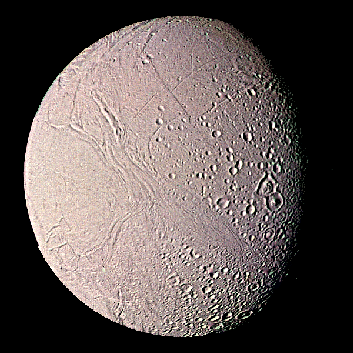Astronomy Picture of the Day
Discover the cosmos! Each day we feature a different image or photograph of our fascinating universe, along with a brief explanation written by a professional astronomer.
November 25, 1995

Saturn's Cleanest Moon: Enceladus
Credit:
NASA,
JPL,
Voyager 2


